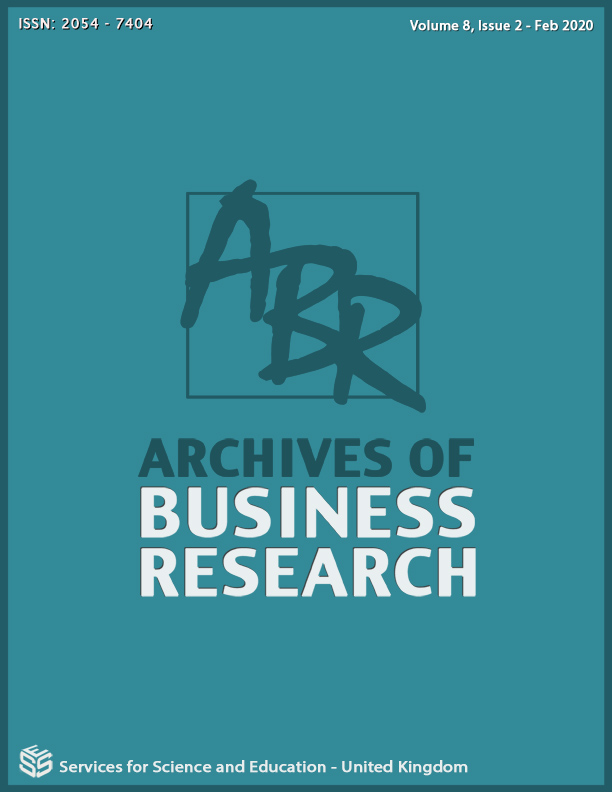B. IS & MIS Information Systems and Management Information Systems: The backbone, sustenance and accomplishment of modern business
DOI:
https://doi.org/10.14738/abr.82.7842Keywords:
Information System, Management Information System, Technology, Backbone, Sustenance and AccomplishmentAbstract
Information System (IS) has always been mixed up and confused with Management Information System (MIS) by many Information Technology professionals, and even in definitions ascribed to them thereby puzzling many users of Information Technology (IT). It should however, be noted that IS deals with the generality of the process of generating information from data; and MIS is definite about information generation for the use of management to enable them to efficiently / effectively plan, organize, direct, control and govern organisations. Any organisation lacking good IS and MIS for effective management of its functions / activities would be seriously handicapped, and as such could be doomed for collapse. Many modern organisations may be culprits of possessing the needed information for effective management of their enterprise, thereby denying the establishment of achieving its goals. It is a fact that achievement of organisational goals are synonymous with success of the enterprise, and management is required to attain the goals established with the directors of the company.
References
Brookes, C. H. P., Grouse, P. J., Jeffery, D. R., & Lawrence, M. J. (1982). Information systems design. Australia: Prentice-Hall.
Dessler, G. (2004). Management-principles and practices for tomorrow’s leaders (3rd edition). USA: Prentice Hall Inc.
De Wit, B., & Meyer, R. (2004). Strategy: Process, content and context (3rd edition). Italy: Thomson Learning.
Energy Policy and Planning Office (2015). Energy data notebook, 1988-2005, 18-Year Series Report. Retrieved from: http://www.eppo.go.th/info/#2.
Gaines, C., Hoover, D., Foxx, W., Matuszek, T., & Morrison, R. (2012). Information systems as a strategic partner in organizational performance. Journal of Management and Market Research, 10(1), May 2012. ISSN: 1941-3408.
Hammer, M. (1990). Reengineering Work: Don’t automate, obliterate. Harvard Business Review, July-August 1990, pp.104-111.
Hitt, Black & Porter (2004). Management (1st edition). eBook. USA: Hall Inc.
Hornby, A. S. (2001). Oxford advanced learner’s dictionary (6th edition). Oxford: Oxford University Press.
Institute of Information Technology (1996). Infotec. Accra: IIT.
Kwadade-Cudjoe, F. (2015). Sustaining Corporate Growth: Exploring the role of MIS in monitoring Companies’ Performance. Germany: Lambert Academic Publishing. ISBN: 978-3-659-80638-4.
Nowduri, S. (2011). Management information systems and business decision making: review, analysis and recommendations, Journal of Management and Market Research, 7(9). April 2011, ISSN: 1941 - 3408.
OECD (2004). OECD Principles of corporate governance. ISBN: 92-64-01597-3 – No. 53533 2004.
Peng, M. W., Wang, D. W., & Jiang, Y. (2008). An institution-based view of international business strategy: a focus on emerging economies, Journal of International Business Studies, 2000.
Presbyterian Church of Ghana (2015). PCG membership statistics database system. Accra: PCG Press.
Really Learning (2012). Briefing Paper One: Systems Thinking. Retrieved from:
https://www.coursehero.com/search/results/608738042/c32ebc0187c8447bef/
Rouse, M. (2012). Decision support system. Retrieved from:
https://www.coursehero.com/search/results/608738343/840ac70b15c1b6ae2/. Sachenko, A. (2012). Foundations of information systems in business.
Retrieved from
https://www.coursehero.com/file/5976270/foundations-of-information-systems-in-business/
ScdlPune (2020). Role and use of management information system (MIS) in airlines aviation industry. Retrieved from: https://www.scdlpune.com.
Thompson, A. A. Jr., & Strickland, A. J. III (2001). Crafting and executing strategy (12th edition). NY: McGraw-Hill.
White, C. (2004). Strategic management. NY: Palgrave Macmillan.
ISBN: 9781403904003.






